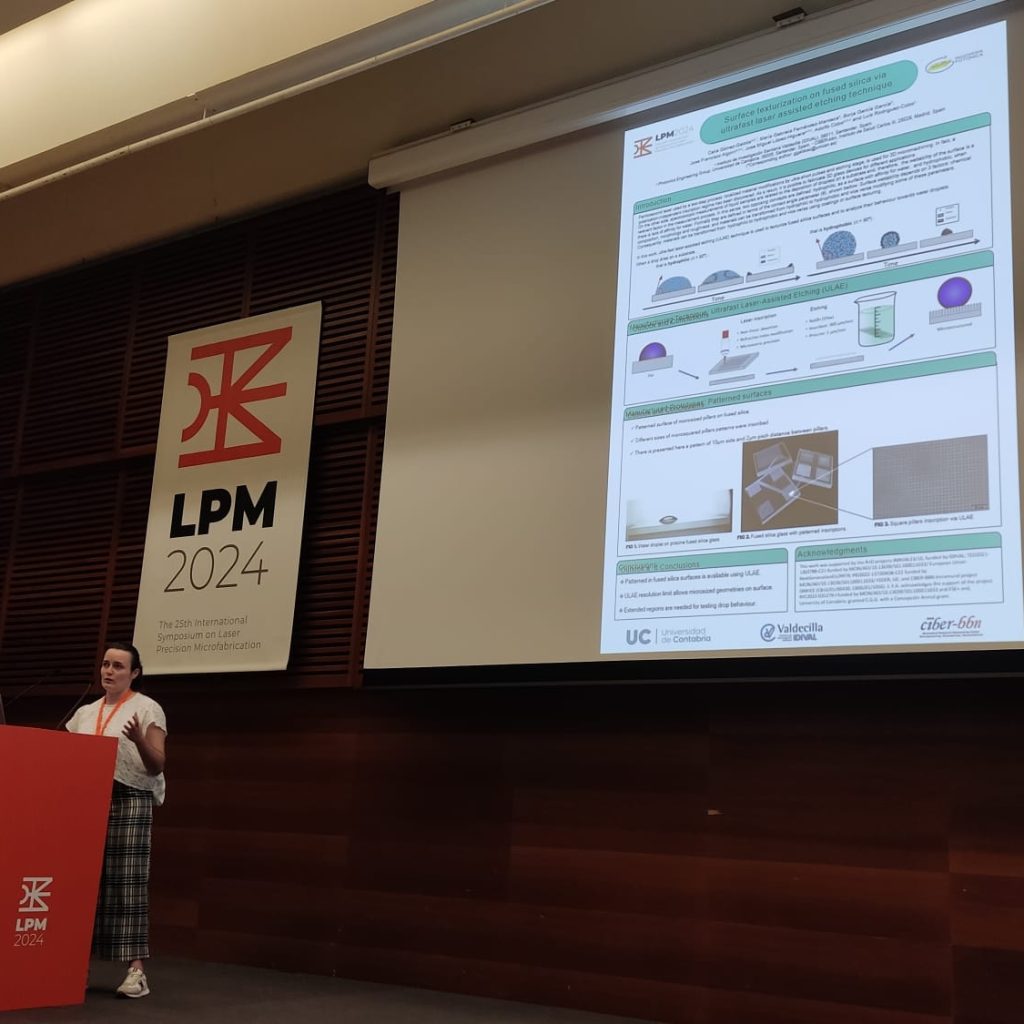Our researchers, Luis Rodriguez-Cobo and Celia Gómez-Galdos, recently showcased two groundbreaking studies at the 25th International Symposium on Laser Precision Microfabrication (LPM2024) in San Sebastian, Spain. Their work, a part of the PALACE project, explores advanced photonic methods for the analysis of microorganism in water.
Transparent Organ-on-Chip for the Cultivation of Live Cells
In their first presentation, «Transparent Organ-on-Chip for the Cultivation of Live Cells,» Luis Rodriguez-Cobo introduced a pioneering approach to developing organ-on-chip technology. This innovative device integrates intricate structures on transparent materials to facilitate the growth and study of living cells using photonic techniques.
Key Features:
- Optical Integration: The chip incorporates various optical elements such as optical fibers, waveguides, and microlenses for precise photonic characterization. These elements direct excitation light (white light or lasers) toward the cells, enabling advanced spectroscopic analyses including absorption, fluorescence, and Raman spectroscopy.
- Microfluidic Cell Culture: The adoption of microfluidic techniques creates in vitro microenvironments that emulate organ-level physiology. This development is particularly focused on ‘heart-on-a-chip’ technology, which replicates heart tissue functions, providing insights into cardiac cell physiology, drug cardiotoxicity, and mechanisms of cardiac regeneration.
- Ultrafast Laser-Assisted Etching (ULAE): The devices are fabricated using ULAE, a two-step process involving focused femtosecond laser pulses to inscribe micrometer-scale components within fused silica plates. This method allows for the creation of three-dimensional shapes and microfluidic channels with high precision, surpassing conventional manufacturing techniques.
This research marks a significant advancement in creating realistic and functional micro-physiological systems, offering a potent tool for biomedical research and drug development.

Surface Texturization on Fused Silica via Ultra-Fast Laser-Assisted Etching Technique
The second presentation, «Surface Texturization on Fused Silica via Ultra-Fast Laser-Assisted Etching Technique,» delves into the utilization of femtosecond lasers for 3D micromachining, particularly through ULAE applied to transparent materials.
Key Insights:
- Two-Step Process: ULAE involves ultra-short pulses that modify materials at localized points, followed by a chemical etching stage where these points are more affected, enhancing the etching rate by up to three orders of magnitude.
- 3D Glass Device Fabrication: This technique allows for the creation of complex 3D geometries in fused silica crystals, independent of polarization, enabling diverse applications.
- Surface Wettability: The research emphasizes the importance of surface wettability in enhancing Raman spectroscopic measurements. By transforming substrate materials from hydrophilic to hydrophobic through coatings or surface texturization, analytes can be guided to desirable areas, improving measurement accuracy.
- Raman Spectroscopy Substrates: The ULAE technique is applied to fuse silica substrates for Raman spectroscopy, where different surface morphologies and their effects on water droplet behavior are analyzed, aiming to optimize contact angles for better analyte concentration.
This study presents a novel approach to enhancing the effectiveness of Raman spectroscopy through surface engineering, offering potential improvements in analytical techniques for water quality assessment.

